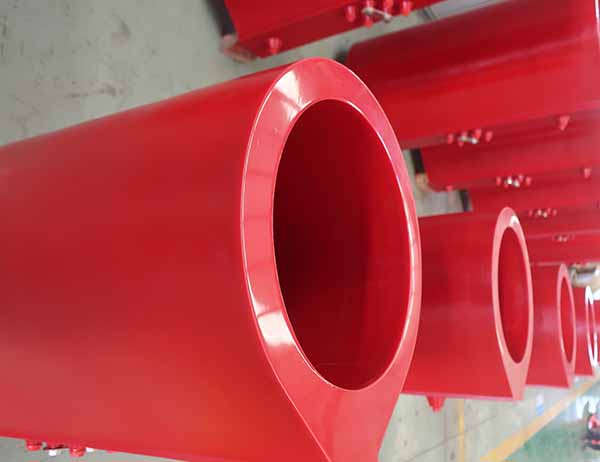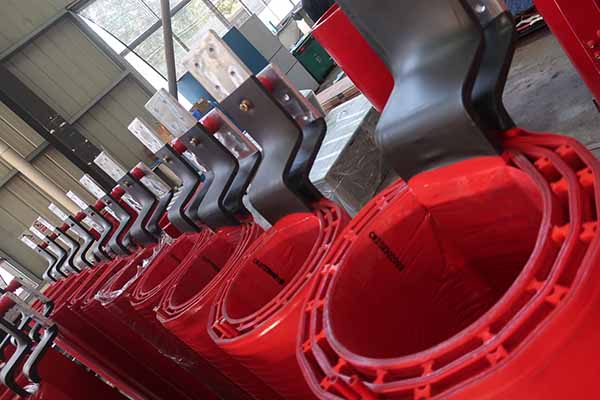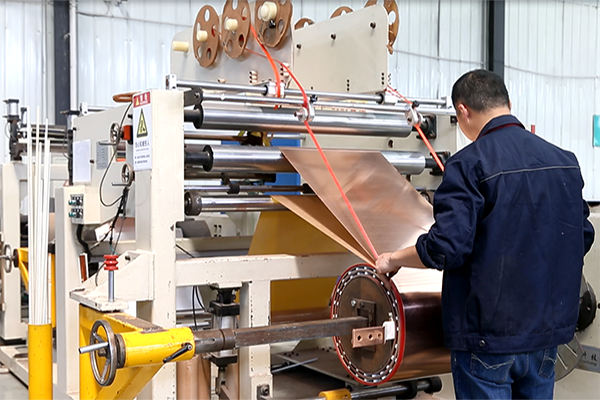In the evolving landscape of transformer technology, achieving optimal performance while adhering to environmental standards has become a priority. Cast resin windings offer a modern, eco-friendly alternative to traditional insulation methods, providing robust protection, enhanced efficiency, and long-term reliability. At Varelen, we specialize in manufacturing transformers that utilize advanced cast resin technology, designed to excel in various demanding environments.
Dry-type transformers utilize a combination of low-voltage (LV) foil windings and high-voltage (HV) round wire windings. This design choice ensures an efficient, robust, and durable construction, making them suitable for a range of industrial and commercial applications. The LV foil winding provides excellent current distribution and minimizes the risks of short circuits, while the HV round wire winding allows for high insulation strength and thermal stability.
This combination helps to improve the transformer's overall efficiency and longevity, making it an ideal choice for applications that demand consistent performance under varying loads. Additionally, this design can handle high mechanical stresses, contributing to the durability and reliability of the transformer over extended periods.

High-voltage round cast resin coils are central to the performance of modern dry-type transformers. These coils are insulated with a specialized resin that encases the windings, providing enhanced electrical insulation and protection from environmental factors such as moisture, dust, and corrosive elements. The resin also acts as a heat conductor, efficiently dissipating heat generated during operation and reducing the risk of overheating.
One of the standout features of HV round cast resin coils is their ability to maintain dielectric performance across different temperature ranges. This makes them suitable for environments where temperature fluctuations are common, ensuring consistent performance without compromising safety. At Varelen, we manufacture these coils to meet the highest standards, using materials that offer the best dielectric properties and mechanical strength.


The LV foil winding is a key component in dry-type transformers, offering several advantages over traditional round wire windings. The use of foil allows for a compact design that ensures uniform current distribution, reducing eddy currents and minimizing losses. This design also provides better short-circuit resistance, making the transformer more resilient under fault conditions.
In addition, foil windings are easier to cool, leading to improved thermal performance and reduced risk of overheating. The ability to handle high currents with minimal energy loss makes LV foil windings an essential feature for efficient power distribution, especially in commercial and industrial applications. Varelen’s transformers utilize top-quality copper or aluminum foil windings, which can be embedded with a thermal class of 155 or 180, depending on the application’s specific requirements.
Cast resin windings can help customers save costs in several ways, particularly in the context of dry-type transformers. Here are the key benefits:
Cast resin technology optimizes transformer performance by insulating the medium-voltage windings, ensuring maximum dielectric performance, and protecting against adverse environmental conditions. When combined with advanced winding technology, the resin guarantees:
Varelen’s cast resin transformers are available with both copper and aluminum windings, and customers can choose between a 155 or 180 thermal class, depending on the desired application. Our products are engineered to deliver optimal performance while minimizing environmental impact, making them a smart choice for industries aiming for sustainable solutions.
Thermal Class Selection: The choice of thermal class (155 or 180) affects the transformer’s ability to handle varying temperature ranges. A higher thermal class allows for greater thermal endurance, making it suitable for applications where higher temperatures are expected.
Material Selection (Copper vs. Aluminum): Depending on the application and budget, customers can choose between copper and aluminum windings. Copper windings offer lower resistive losses and higher efficiency, while aluminum provides a cost-effective alternative without compromising too much on performance.
Application-Specific Requirements: Consider factors such as load demands, installation environment, and safety regulations when selecting a cast resin transformer. Each factor plays a role in determining the appropriate specifications for the transformer to ensure optimal performance.
dry type cast resin windings are at the forefront of modern transformer technology, offering a perfect balance between performance, safety, and sustainability. make cast resin windings a cost-effective choice for customers looking to optimize their transformer investments, especially for applications where maintenance and safety are critical concerns.
At Varelen, we prioritize innovation and quality, ensuring our products meet the highest standards and contribute to a cleaner, greener future. By choosing cast resin transformers, industries can benefit from reduced maintenance, enhanced safety, and improved efficiency—all while supporting eco-friendly practices.